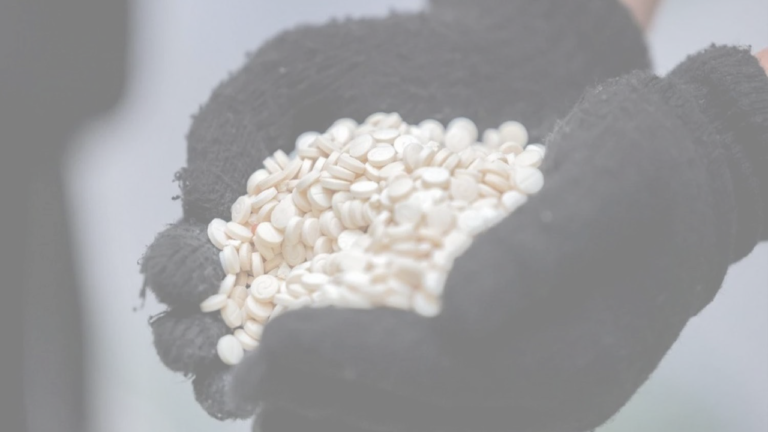Since the beginning of the war in Ukraine in 2022, economic and diplomatic ties between Russia and China have significantly strengthened. Most recently, during a visit to Beijing in December 2023, Russian Prime Minister Mikhail Mishustin signed agreements to deepen investment cooperation and expand agricultural exports to China, reflecting a burgeoning economic relationship. However, this growing bond faces significant obstacles, particularly as China imposes secondary sanctions on Russian entities.
Chinese Secondary Sanctions
In January 2024, China’s three largest banks, the Industrial and Commercial Bank of China (ICBC), the China Construction Bank (CCB), and the Bank of China, stopped accepting payments from sanctioned Russian credit institutions. This decision includes all transfers from sanctioned financial institutions, regardless of which payment system is used – be it SWIFT, Russian SPFS, or Chinese CIPS. These secondary sanctions appear to be a direct response to the 12th package of sanctions against Russia that the U.S. recently imposed. Interestingly, these actions were implemented just one month following Russian Prime Minister Mishustin’s visit to Beijing in December 2023, which resulted in a memorandum of understanding and deepening investment cooperation, export of agricultural products to China, and cooperation in sports.
While these Chinese-imposed sanctions were necessary from a foreign policy perspective, they will likely cause tensions between China and Russia. As the scope of Western sanctions on Russia increases, Beijing finds itself in a difficult situation. While China wants to maintain good relations with Russia, it does not appear ready to face the consequences of potential sanctions from its Western partners. In addition to those from China, secondary sanctions imposed on several key sectors, including energy and finance, were the most damaging to Russian companies that had direct financial exchanges with Chinese partners. These sanctions have limited business opportunities for Russian companies and caused a disruption in bilateral relations between China and Russia. China’s introduction of secondary sanctions also signals that Beijing will not tolerate pressure on its economic and political interests, even if it damages relations with Russia.
Prior to these secondary sanctions, China had provided an economic bailout to Moscow after Russia was cut off from the flow of the global economy in response to its invasion of Ukraine, and trade between the two countries had grown significantly. At the end of 2023, relations between China and Russia were at the highest level in the previous few decades. Still, it is becoming clear that Moscow has a greater interest in deepening economic cooperation than Beijing.
Strengthening ties between Beijing and Moscow may complicate China’s efforts to present itself as a neutral mediator in the war in Ukraine, given the growing pressure from the international community and support for Kyiv expressed by the G7. Specifically, Beijing appears concerned about the unified front among Western countries, as demonstrated during the Group of Seven (G7) summit in Japan. During this summit, discussions centered on how to oppose Chinese economic coercion, especially its attempts to abuse its economic power to resolve political disputes. One such example of Chinese economic coercion was its response to Lithuania opening a Taiwan Representative Office in Vilnius in November 2021, which included removing the country from its customs system to block bilateral trade and issuing informal secondary sanctions against companies sourcing products from Lithuania. However, despite these efforts, which included pressuring firms such as Germany’s automotive company, Continental AG, the economic impact on Lithuania was minimal, and the country did not yield to China’s demands.
The refusal of Chinese banks to process transactions from Russian banks has led to significant disruptions in financial flows and trade.
In addition to facing a unified Western coalition, China’s concerns are further exasperated by issues in its own backyard, including the expansion of the Quadrilateral Security Dialogue (Quad) to South Korea, Vietnam, New Zealand, and throughout the Indo-Pacific region. This Asia-Pacific NATO equivalent represents the biggest threat to China’s dominance of the South China Sea and an additional adversarial coalition to face in the event of a Chinese invasion of Taiwan. At the same time, India’s participation in a military alliance with the U.S. and its partners would cement any further BRICS development and slow down the establishment of a common currency to replace the dollar.
However, given the current geopolitical situation, China is forced to protect its national interests and reduce the degree of economic isolation. One of the heaviest blows to its economy would be being placed under sanctions by the U.S. and the EU, which is why China carefully balances realpolitik interests and its alliance with Russia.
Russia’s Strategy and Global Response
Despite the significant increase in trade between China and Russia — reaching a record USD 240 billion in 2023 — payment processing delays and stricter compliance checks have emerged as major obstacles. The slowdown in cross-border settlements has impacted ordinary trade, with businesses facing cash flow crises due to extended transaction processing times.
The refusal of Chinese banks to process transactions from Russian banks has led to significant disruptions in financial flows and trade. Banking and transportation industry experts claim that Russian firms, unable to make direct payments for goods in China, have turned to intermediaries to facilitate transactions. This burgeoning market for middlemen involves legal entities from Hong Kong, Kyrgyzstan, Kazakhstan, the UAE, and other jurisdictions deemed “friendly” to Russia. These intermediaries enable Russian companies to bypass direct sanctions, albeit at high costs and risks. Sources indicate that these intermediaries now handle up to half of transactions between Russia and China. However, this workaround has its challenges. High fees, shipment seizures in third countries, and potential refusals by Chinese banks, even for intermediary-handled payments, complicate this process. The U.S. Treasury has also warned of sanctions on those facilitating such transactions, adding another layer of risk.
In addition to the reliance on intermediaries, Russia has been pushing for more transactions to be conducted in alternative currencies, such as the Chinese yuan and the Russian ruble. This strategy aims to reduce dependency on the U.S. dollar and the traditional SWIFT payment system, thus shielding transactions from U.S. sanctions. However, the transition to such a system is fraught with its own set of challenges, including currency volatility and limited acceptance of these currencies in global trade.
The Chinese decision to impose sanctions on the banking sector can influence the decisions of other countries to protect their economic interests in the same manner. Considering that almost 40 percent of Russian payments are directed towards China and Turkey, this decision by Chinese banks has also alerted decision-makers in Turkey. Earlier this year, Turkish banks also tightened their policies toward Russian clients, further limiting Russian oil exporters from receiving payments for their products.
Furthermore, banks in the UAE have similarly reacted to the situation and started closing the accounts of Russian citizens. They have stopped accepting money from Russia and do not process money transfers in the opposite direction, all due to fear of potential secondary sanctions from the U.S.
Implications for Global Trade
The imposition of secondary sanctions and the resulting financial adjustments have broader implications for global trade. As countries navigate the complexities of these sanctions, there is a noticeable shift towards creating more resilient and independent financial systems. For instance, China’s move to develop a cross-border payment system independent of the SWIFT network is indicative of a larger trend towards financial de-globalization and the creation of parallel financial infrastructures.
For countries like Russia, this means an increased focus on regional trade alliances and the development of alternative trade routes. The geopolitical landscape is thus becoming more fragmented, with countries seeking to insulate themselves from the impacts of sanctions through regional cooperation and the development of indigenous financial systems.
Looking ahead, the future of Russia’s navigation of secondary sanctions will likely involve a combination of strategic alliances, the use of intermediaries, and the development of alternative financial systems. The ongoing economic and political pressures will necessitate continuous adaptation and innovation in how transactions are conducted and how international trade is managed.
Russia’s efforts to navigate secondary sanctions reveal a complex web of strategic alliances, intermediary transactions, and cautious financial maneuvers. While China remains a crucial economic partner, its banks’ reluctance to process Russian payments underscores the broader implications of U.S. sanctions. Other nations, observing these dynamics, have also adopted measures to safeguard their economic interests.
As Russia continues to adapt to these challenges, the evolving geopolitical landscape will require ongoing adjustments and strategic responses. The interplay between sanctions, economic interests, and international alliances will shape the future of global trade and diplomatic relations. Countries’ resilience and adaptability to these economic pressures will determine their ability to thrive in an increasingly fragmented and sanction-prone global economy.
Cover image credits: www.freepik.com




